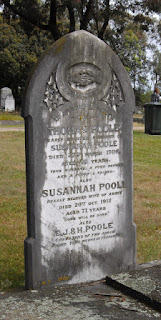The Pakenham Consolidated School was officially opened on May 29, 1951, on the site of the Pakenham State School, No.1359, in Main Street. The original Pakenham School had opened on a site near the Toomuc Creek in January 1875 and it moved to the Main Street site in 1891. The Pakenham Gazette of June 8, 1951 reported that on May 29th, four buses conveyed 130 children from surrounding districts to Pakenham Consolidated School. At present there are 258 pupils attending the School, and it is hoped that in September several other schools will be consolidated, raising the attendance to over 400 children.
The first Head Master was Charles Hicks. The School offered classes up to Year 10 (Form 4). The schools that formed the Consolidated School were Pakenham Upper No. 2155 (closed January 1952), Pakenham South No. 3755 (closed September 1951), Toomuc Valley No. 3034 (closed September 1951), Army Road No. 3847 (closed April 1947), Mount Burnett No. 4506 (closed October 1949), Tynong No. 2854 (closed April 1951), Tynong North No.4464 (closed December 1951), Nar Nar Goon North No. 2914 (closed October 1951), Nar Nar Goon South No. 4554 (closed May 1951), Rythdale No. 4231 (closed September 1951), Officedale No. 4242 (closed May 1951), Cora Lynn No. 3502 (closed May 1951) and Koo-Wee-Rup North (Five Mile) No. 3198 (closed November 1959). Some communities appreciated the opportunities that their children would get from a larger School whilst other parents felt the distance to be travelled by bus and the larger class sizes were a disadvantage.
The School consisted of new buildings, which at the time cost one hundred thousand pounds, and many of the old School buildings. Some towns did not realise that their School buildings would be removed from the sites and transferred to Pakenham, and thus the town would lose a community meeting place. By 1966, when the photograph below was taken, Pakenham Consolidated School had 550 primary students and 94 post-primary students. There must have been a space shortage, because my Grade 2 classes were all conducted down the street at the Anglican Church hall. Our teachers, that year, were Mrs Ring then Miss Ahern (who became Mrs Fitzgerald).

The Pakenham Consolidated School moved from its original location in Main Street to its current location in Rundell, Way in 1997.
There are photographs of the School from the 1950s and 1960s, from the Public Records Office of Victoria in posts here and here.
Much of the information for this piece comes from the paper written by Ron Smith, in 1974, Consolidation, with particular reference to Pakenham Consolidated School. Copy held in the CCLC Archive. Information also taken from Vision and Realisation : a centenary history of State Education in Victoria (Education Department of Victoria, 1973)
Much of the information for this piece comes from the paper written by Ron Smith, in 1974, Consolidation, with particular reference to Pakenham Consolidated School. Copy held in the CCLC Archive. Information also taken from Vision and Realisation : a centenary history of State Education in Victoria (Education Department of Victoria, 1973)
























